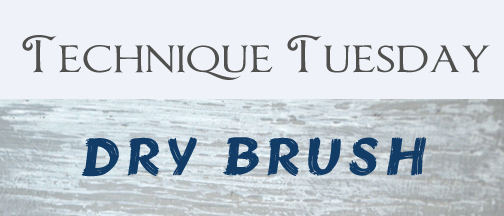What is it?
Today’s featured technique is the dry brush technique. Like last week’s technique, the multi-loaded brush, this technique deals with the way that the artist loads their brush before applying it to the canvas. With the dry brush technique, rather than using a brush moistened with oil or water (depending on the type of paint) and an ample amount of paint to get a nice smooth brushstroke, an artist will instead use a mostly dry brush and a smaller amount of paint. This way, when the brushstroke is made, it has a more scratchy, textured, and wispy appearance. This is a technique that is used in both water-based painting (watercolor, egg tempera, acrylic) and oil-based painting.
Examples from art history:
One of the most beautiful and iconic uses of the dry brush technique can be found in ancient Chinese art. Chinese brush painting involves a brush dipped into black or colored inks, and dates very far back. It was during the Song Dynasty (960-1279), however, that Chinese brush painting reached a new level of sophistication and began to incorporate techniques like dry brush painting. The lighter, softer, and more blurred effect produced by using a dry brush allowed for a range of atmospheric effects. The images below are examples from this dynasty:

During later periods of art history, artists also began to use the dry brush technique in a way that is referred to as “scumbling.” Though many use “dry brushing” and “scumbling” interchangeably, the distinguishing aspect of scumbling is that it is used in the layering process of paint. (So, while dry brushing might sometimes involve the paper showing through, scumbling in particular allows the other layers of paint to show through.) One of the great Masters of the Baroque period (17th and 18th centuries), Rembrandt van Rijn was perhaps one of the most famous artists to make use of scumbling technique, as he used it to achieve unique and extraordinary lighting effects. The image below shows the technique as used by Rembrandt, as well as an example from over two centuries later, in a painting by Edouard Manet:

Examples from Principle Gallery:
Artists today still use the dry brush technique in a variety of ways to achieve the effect of lighting, texture, and atmosphere they desire. One Principle Gallery artist who makes frequent and beautiful use of the dry brush/scumbling technique is landscape painter Kevin Fitzgerald. Kevin utilizes this technique in many ways: to give a blurred softness to the edges of the fields of color in a piece, to give the wispy impression of clouds, to add an interesting texture, to loosely blend layers of colors, and to give a misty, peaceful atmosphere to the work–just to name a few! “Indian River Morning,” one of the pieces included in Kevin’s upcoming solo exhibition (opening March 20th!) is an excellent example of this technique:
Enjoy these additional beautiful examples of Kevin’s use of the dry brush technique below (or click here to see all of his available work on our website), and be sure to keep an eye out for many new works to arrive soon for his solo exhibition!





2 thoughts on “Technique Tuesdays: Dry Brush”